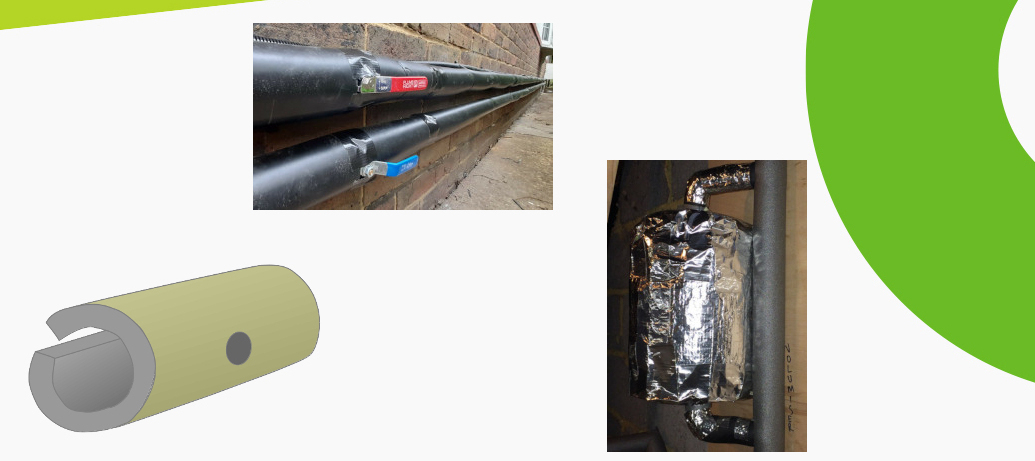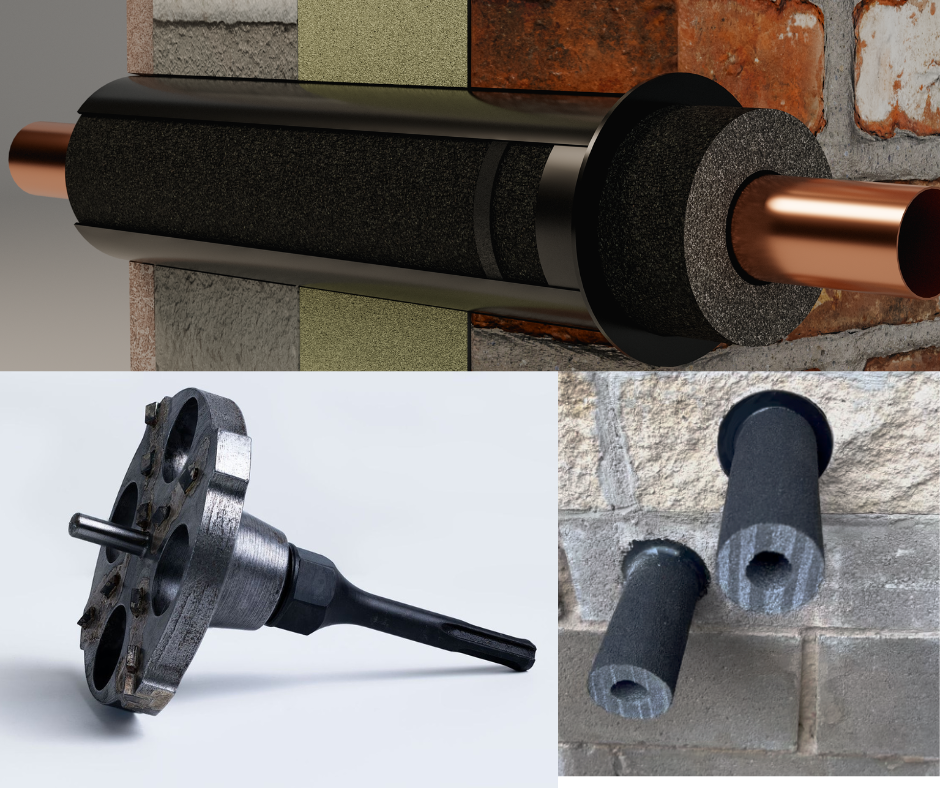Updated on 21/01/25 by Chris_OVO:
Pipe Insulation for your Air Source Heat Pump (ASHP)
In collaboration with our Zero Carbon Homes trialists, we’ve put together a guide to the pipe insulation which should be fitted alongside an Air Source Heat Pump. Getting this pipe insulation right will make sure your new heating system runs as efficiently as possible so it’s really valuable to learn from those who’ve already been through the installation process.
Below we’ve combined images and testimonials from members that have made the move away from carbon intensive gas boilers, to help show what to look out for following a visit from your installers.
The basics
1: Exterior - must be Class-O, closed-cell, UV-resistant with wall thickness greater than 19mm.
2: In lofts, unheated “plant-rooms”, garage spaces or below a suspended floor. This should also have high wall-thickness and the joins taped. It may be subject to condensation but not exposed to sunlight and rain.
3: Internal - Can be the more common Climaflex type held with clips such as those sold here.
External ASHP pipe insulation
The temperature difference between the water flowing from and returning to the Heat pump will be about 5°C whilst the pump is running. It is therefore important to properly insulate these external pipes in order to prevent heat-loss.
Exterior insulation needs to have two main characteristics:
- it must be of closed-cell construction to prevent rain or condensation filling up the voids within the material. They are what provide the insulating properties.
- it must be resistant to UV radiation from sunlight.
Neither the common grey Polyethylene (Climaflex) insulation, nor the black nitrile-rubber (Armaflex) insulation satisfy these criteria.
If there is little choice available, Armaflex nitrile-rubber can be used, but should then be over-painted with at least 2 coats of a terpolymer resin paint such as Armafinish 99, or ArmaFinish FR. These are available in black, grey or white.
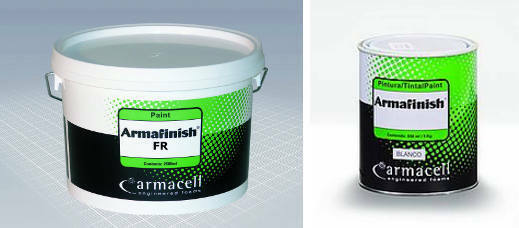
The better choice is to use an EPDM-rubber insulation such as Armaflex HT. This is more commonly sold for use on pipework connections to solar-thermal panels - hence the HT designation for High Temperature. However, it is its resistance to UV radiation which makes solar-pipe insulation suitable for Heat pumps.
Both Armaflex nitrile rubber and Armaflex HT EPDM pipe insulation are sold in 2m lengths with wall thicknesses of 13, 19 and 25mm.
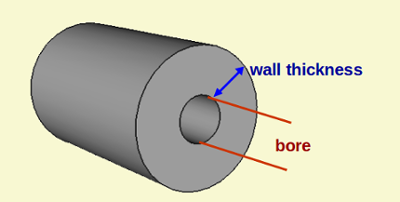
When lagging long runs of 15mm or 22mm pipe, rolls of insulation are also available. However as this roll option is only manufactured with wall thicknesses of 13mm or 19mm, it is of little use for exterior Heat pump pipework in the UK’s winter climate. Long pipe runs would require 25mm thickness.
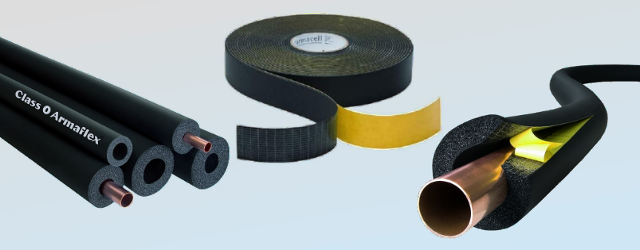
Insulation should cover not just the external pipework, but also every valve. This requires sections to be made from lengths with a larger internal bore. EPDM-rubber insulation is available with bore sizes in steps from 15mm to 89mm for both 19mm & 25mm wall-thicknesses.
Generic “solar” pipe insulation is readily available from BES and BIS (no relation). But avoid buying from Ebay and Amazon sellers unless you really can tell the difference between UV-resistant EPDM and ordinary Nitrile Rubber! You may not be supplied with what you’ve ordered.
Both types of black rubber insulation are normally referred to as ‘Class-O’. This is their fire-rating. They are much less combustible than the grey Polyethylene variety and do not give off poisonous fumes when in a fire.
To accommodate a valve lever, a round hole is made in the insulation on the opposite side to the lengthways split.
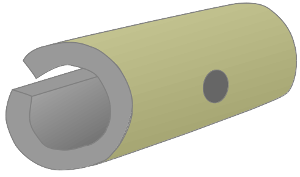
It can be fitted by temporarily removing the handle on a manually-operated valve. That split is then on the opposite side of the valve body, and must be sealed with exterior-grade Class-O insulation strip.
To avoid ingress of rain water, valves in external pipework should not be installed with the lever-handle upwards.
Joins between sections of insulation need covering with a UV-resistant tape. This must not be stretched when being applied. It may unstick itself when it later contracts, and it can compress the EPDM, decreasing the wall thickness and hence leave a weak-spot for heat-loss.
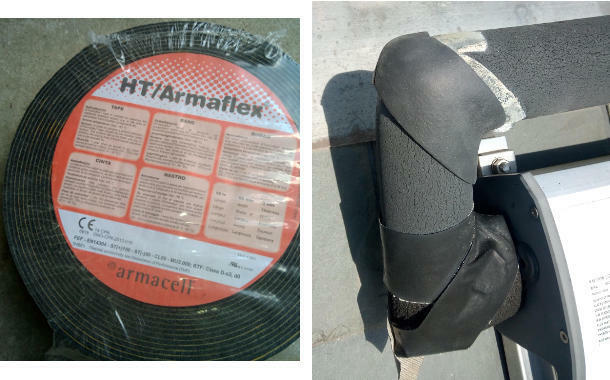
Tape with integrated fabric is best. If you can’t find an EPDM tape then Scotch (3M) do a Tough Duct Tape which is UV resistant.
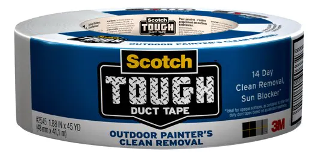
(Duck Tape is also used - mainly by those who’ve only heard an audible description and don’t mind the bill.)
Here’s an example of what might be considered good insulation:
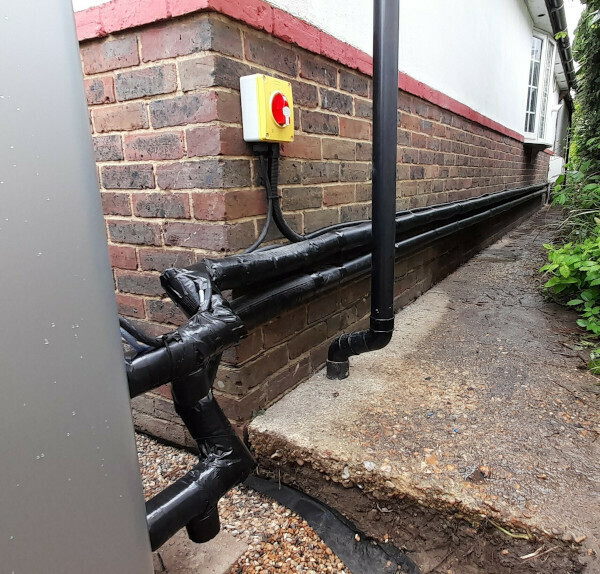
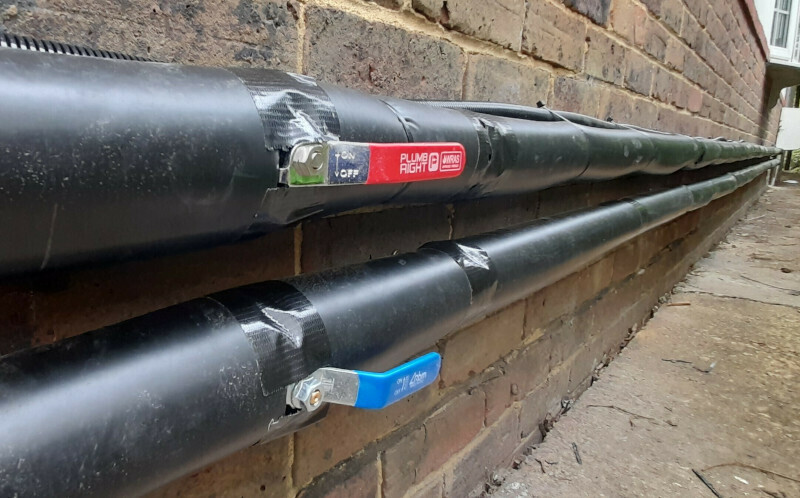
Here’s another example:
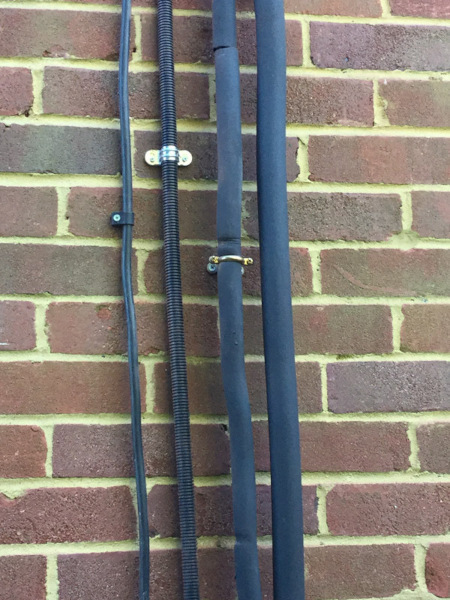
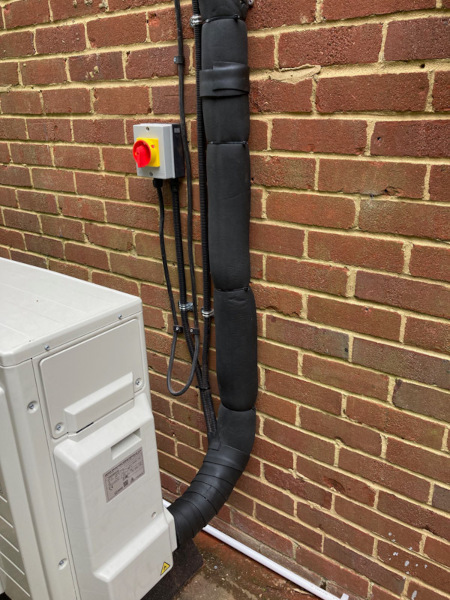
Here are some before and after shots on a different location, one installer vs another:
Before:
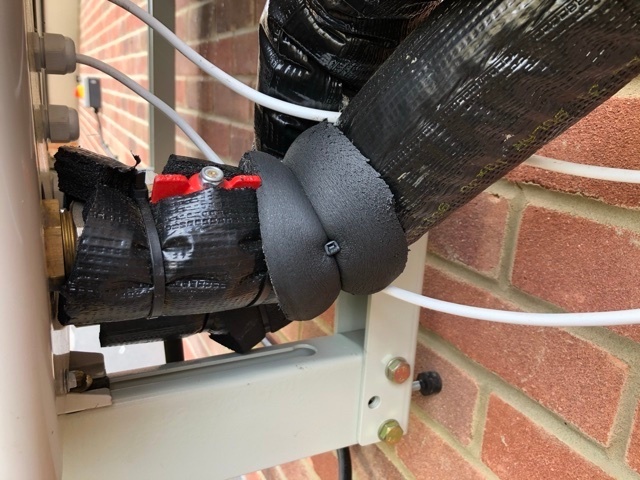
After:
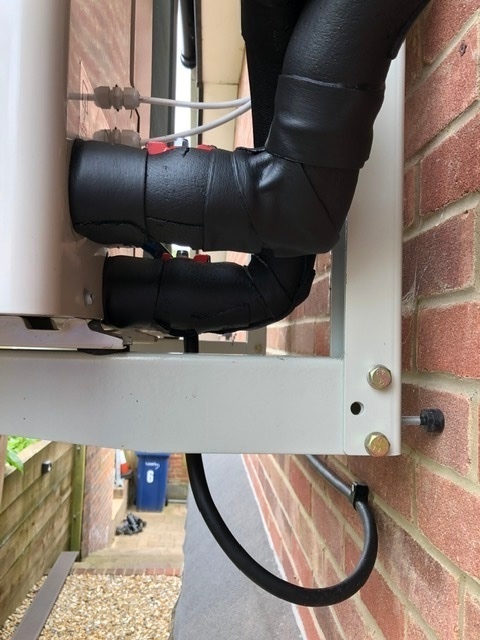
Before:
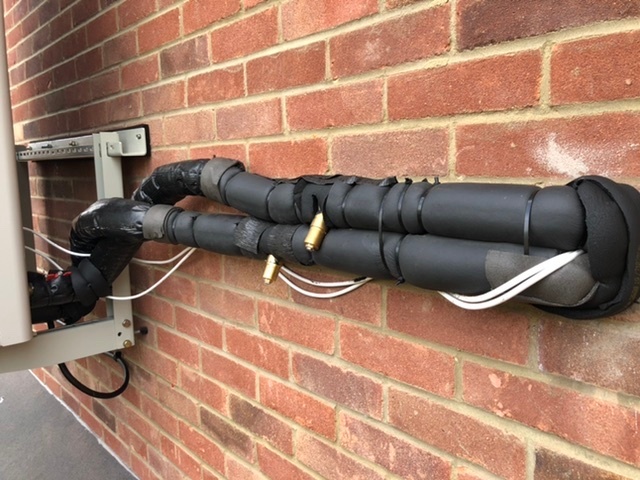
After:
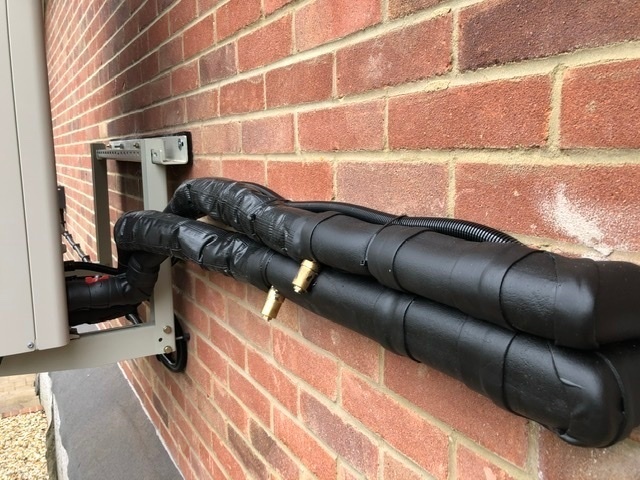
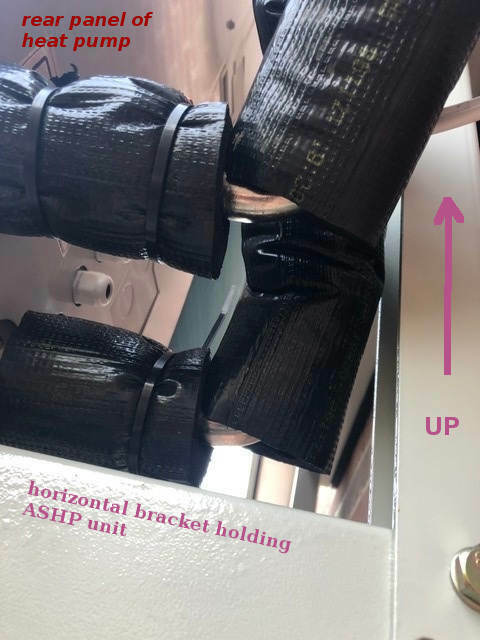
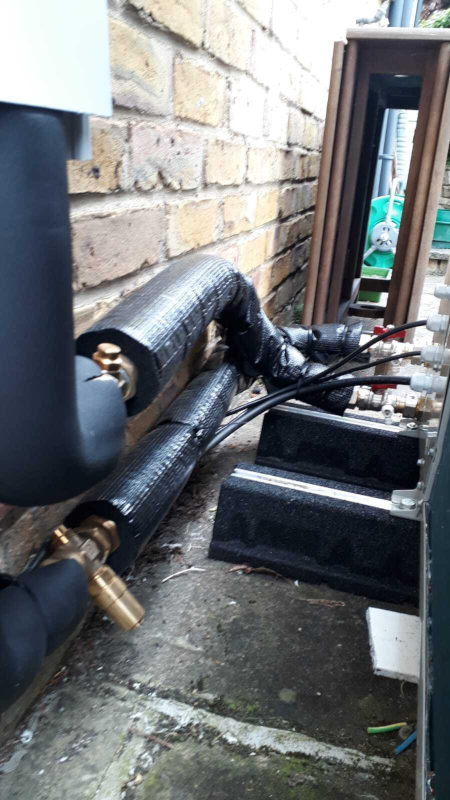
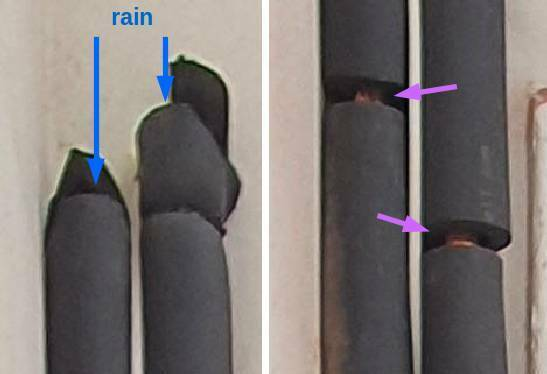
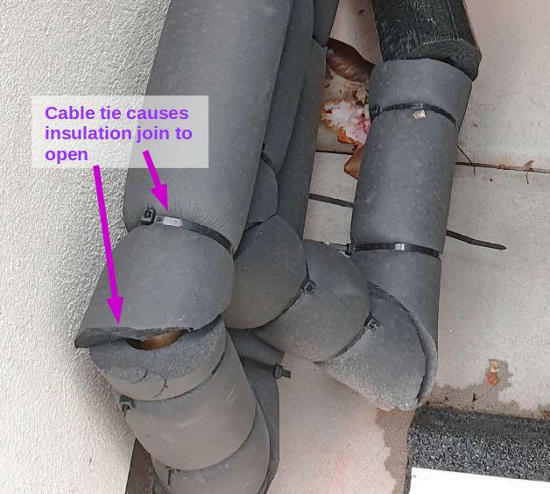
It can be fitted by temporarily removing the handle on a manually-operate valve. That split is then on the opposite side of the valve body, and must be sealed with exterior-grade Class-O insulation strip.”
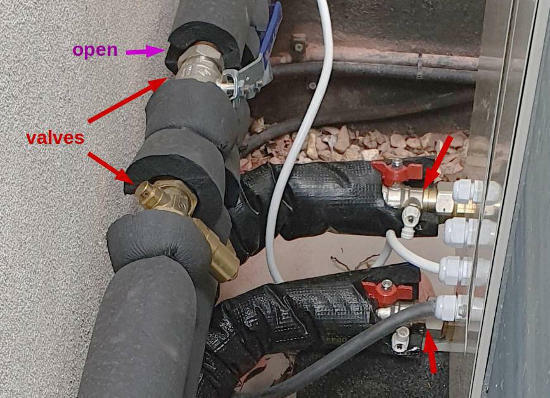
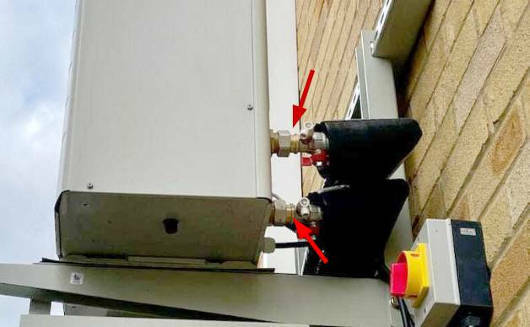
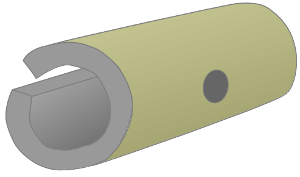
From
If any joint / valve/ fitting is not sealed correctly, moisture/rain/snow will get in and not only reduce the efficiency of the heat pump/system but also deteriorate the insulation.
All Class O, including the HT type, is not fully waterproof and has to be installed to their manufactures instruction. The issue with this is that sealing and painting class O cant be done in humidity higher than 80% or temps lower than 10 ℃. This means most of the time in UK, it cant be fitted correctly.
This is why you will see many installations with Tie Wraps fitted, trying to keep the insulation on however, if there are any gaps or holes, this will effect the efficiency of the heat pump/system and insulation as you can see from the photos:
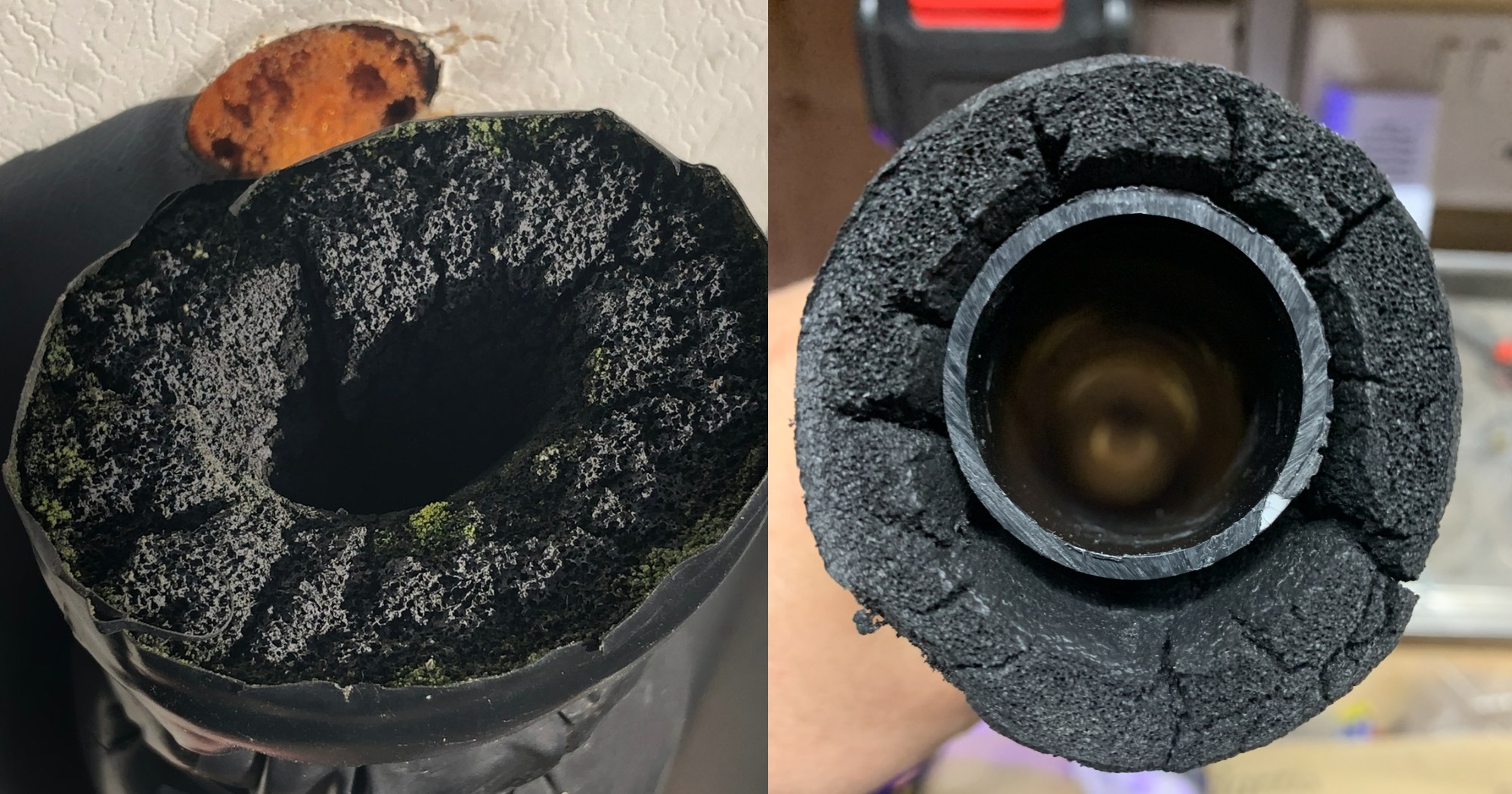
Here’s a great video, found by
Indoor ASHP pipe insulation
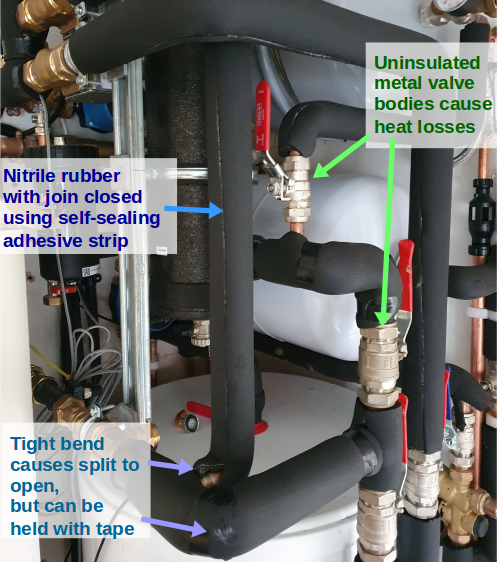
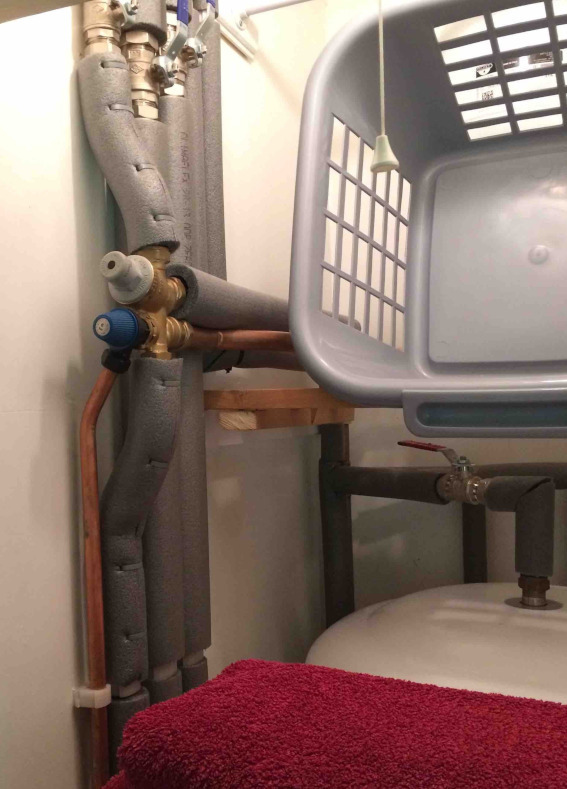
Here’s another before and after combination. Notice the lack of insulation in the before shot!
Before:
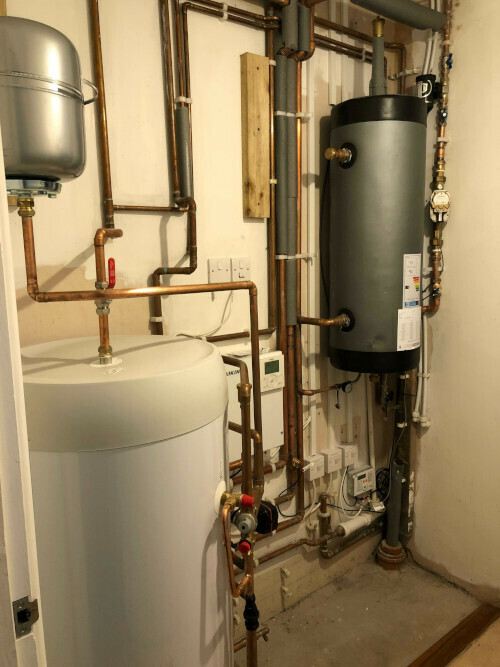
After:
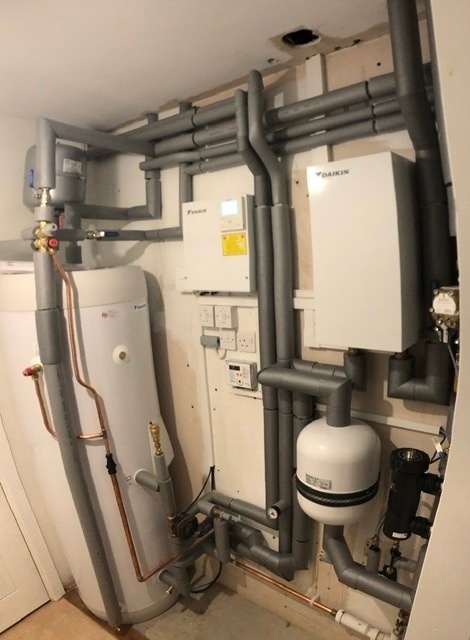
Loft / garage ASHP pipe insulation
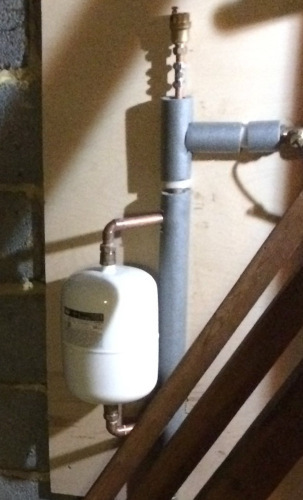
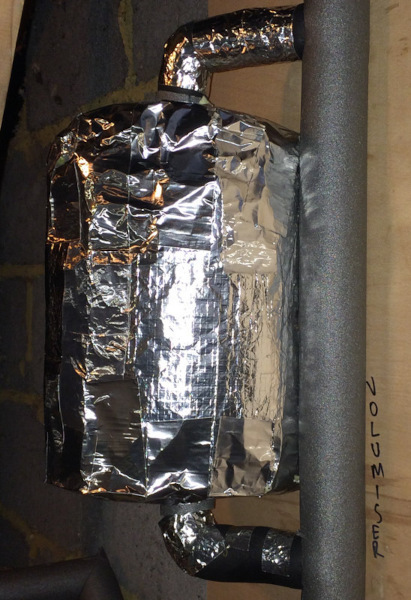
Note that foil insulation predominately offers a defence against thermal radiation. The traditional rockwool and glass fibre products counter losses through conduction and convection. They are different approaches and need evaluation for each situation.
In some areas of the UK the Local Planning Authority (LPA) will not allow a house to pass Building Regs if it uses solely foil-based insulation in the attic/roof area. This is a controversial topic, based on the way in which the National Physics Laboratory and BRE specify the tests prior to awarding the required certification.
That product accreditation issue should not prevent foil-based products being used to add insulation to component parts of a Heat pump installation. It can easily be cut to shape and produces minimal wastage.
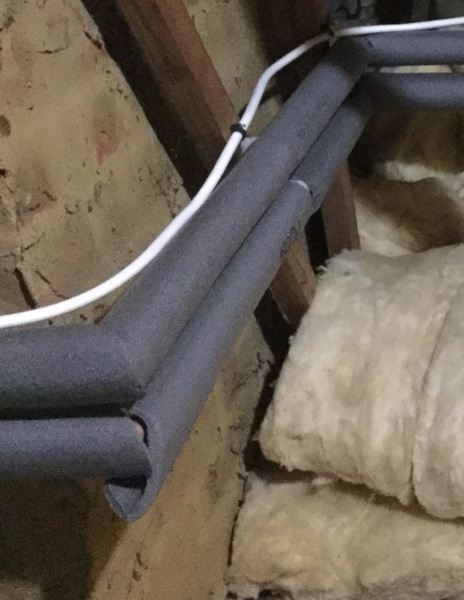
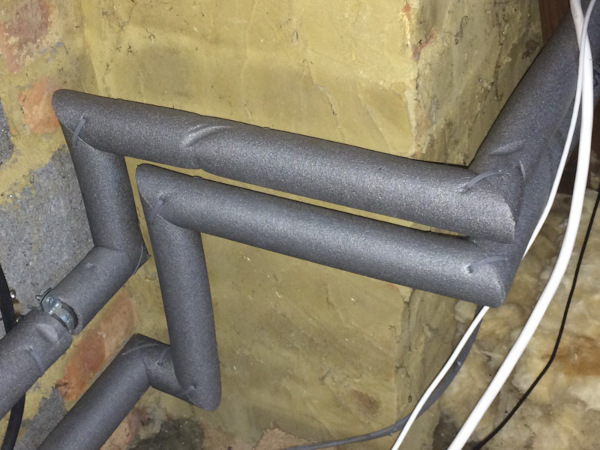
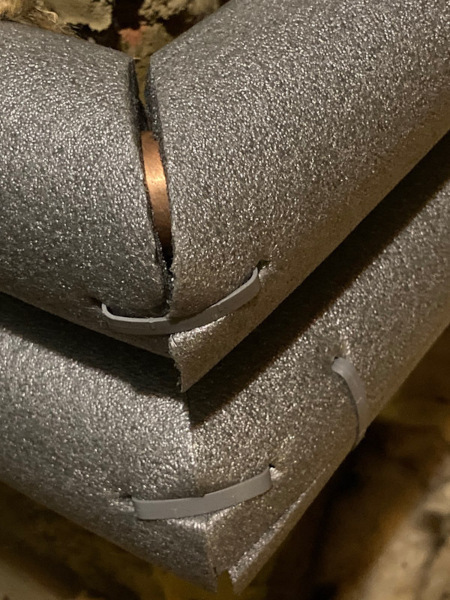
Another example here:
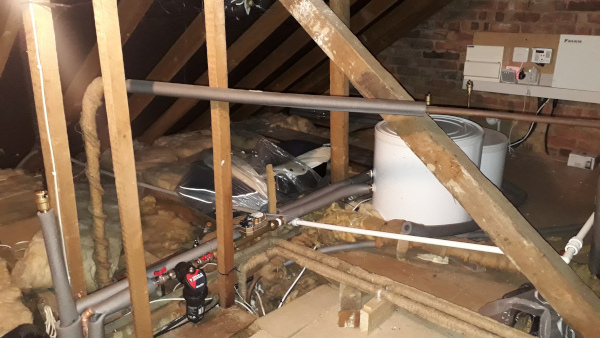
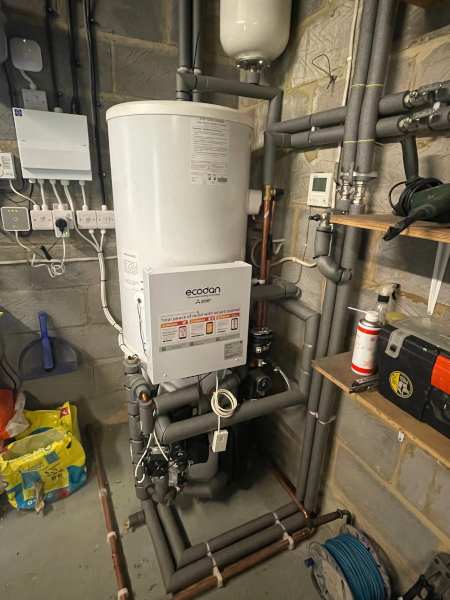
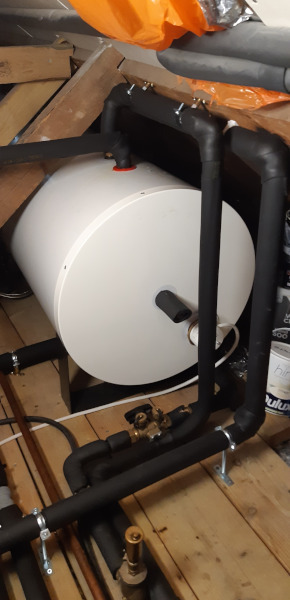
Conclusion
There’s many shapes and sizes to a heat pump, and the pipes that connect the system together. No two installs look the same, but there are common principles for effective pipe insulation that are worth getting right.
Just how much of an impact pipe insulation makes for the overall efficiency (and cost effectiveness) of the system might be up for debate, but we hope this guide has helped you to better understand what good insulation looks like.
If you’re unsure about the pipe insulation for your heat pump, post a few picture below and our community members might just be able to help!


